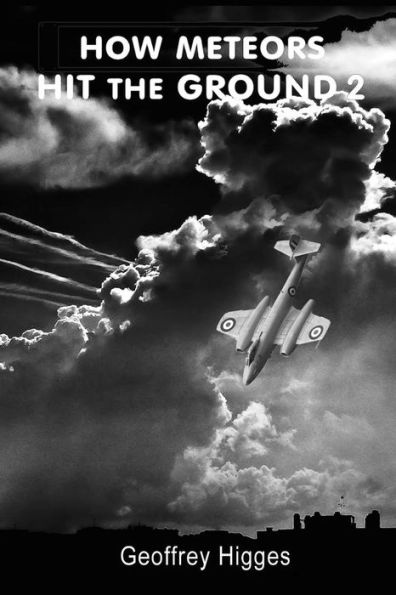How Meteors Hit the Ground 2: Detailed Accident Data Included
This is the 2nd edition of "How Meteors Hit the Ground". The only difference from the first book is that tables are added giving detailed information of each of 795 write-offs of Meteors that occurred after WWII between 1945 and 1957. This book uses the author's 6 years experience flying the Gloster Meteor jet fighter to analyse the reasons for the many accidents that occurred with this aircraft. For example, on average during the year 1952, 3 Meteors were written off every week, and a Meteor pilot killed every 4 days. In 1945, Number 616 Squadron of the British Royal Air Force was equipped with the Gloster Meteor fighter which was the first and only jet aircraft to be used by the Allies in World War II. In 1951 the author became a fighter pilot with 616 Squadron flying the latest version of the Meteor, and during his 6 years flying this aircraft, the author also qualified and gained experience as a Flight Test Engineer. So he is well qualified to comment on the qualities of this historic aircraft, and discuss the various characteristics which contributed to so many accidents during its lifetime.
1119706015
How Meteors Hit the Ground 2: Detailed Accident Data Included
This is the 2nd edition of "How Meteors Hit the Ground". The only difference from the first book is that tables are added giving detailed information of each of 795 write-offs of Meteors that occurred after WWII between 1945 and 1957. This book uses the author's 6 years experience flying the Gloster Meteor jet fighter to analyse the reasons for the many accidents that occurred with this aircraft. For example, on average during the year 1952, 3 Meteors were written off every week, and a Meteor pilot killed every 4 days. In 1945, Number 616 Squadron of the British Royal Air Force was equipped with the Gloster Meteor fighter which was the first and only jet aircraft to be used by the Allies in World War II. In 1951 the author became a fighter pilot with 616 Squadron flying the latest version of the Meteor, and during his 6 years flying this aircraft, the author also qualified and gained experience as a Flight Test Engineer. So he is well qualified to comment on the qualities of this historic aircraft, and discuss the various characteristics which contributed to so many accidents during its lifetime.
8.22
In Stock
5
1

How Meteors Hit the Ground 2: Detailed Accident Data Included
136
How Meteors Hit the Ground 2: Detailed Accident Data Included
136Paperback
$8.22
8.22
In Stock

Product Details
| ISBN-13: | 9781499275612 |
|---|---|
| Publisher: | CreateSpace Publishing |
| Publication date: | 04/26/2014 |
| Series: | How Meteors Hit the Ground , #2 |
| Pages: | 136 |
| Product dimensions: | 6.00(w) x 9.00(h) x 0.29(d) |
About the Author
From the B&N Reads Blog
